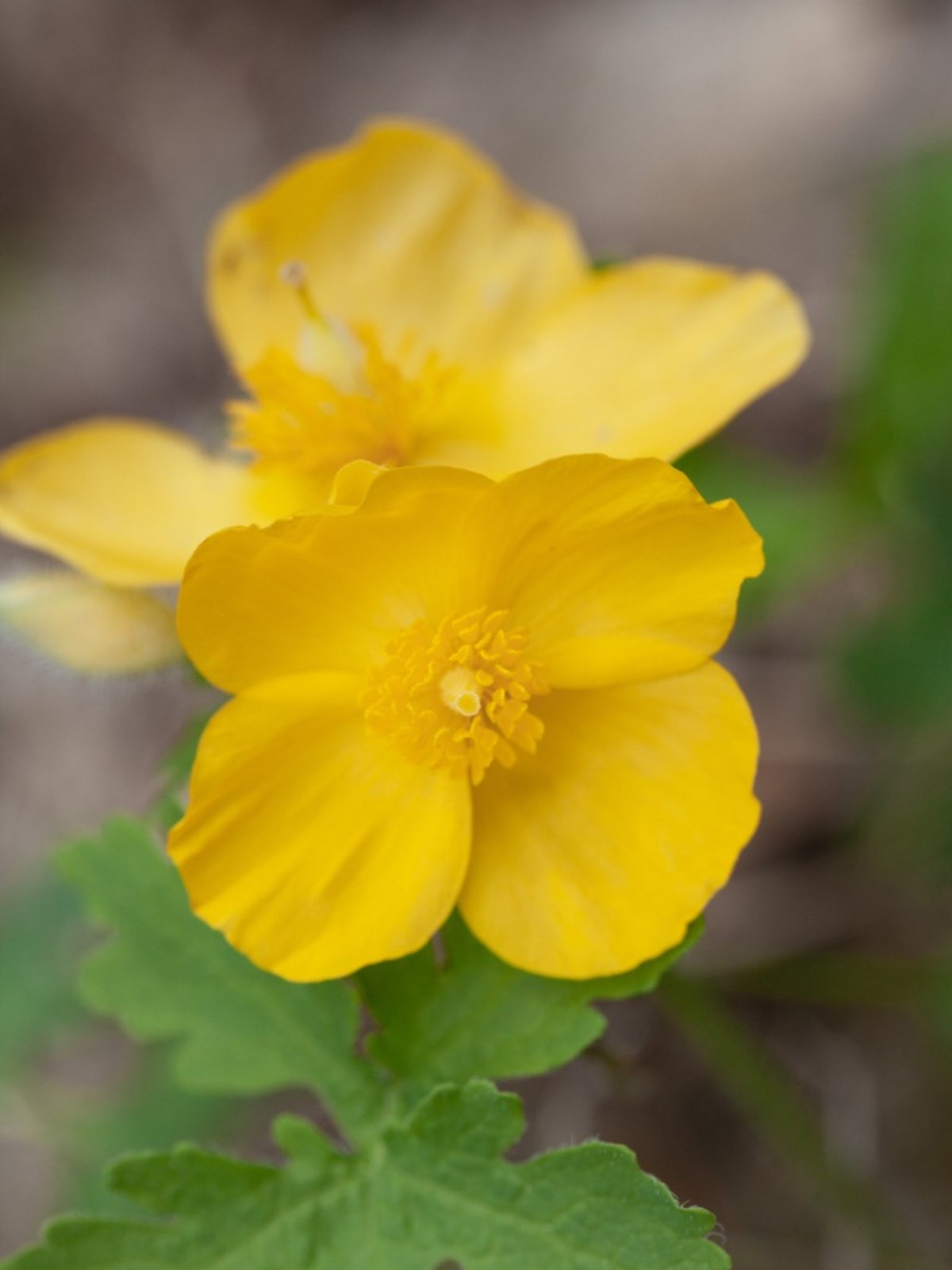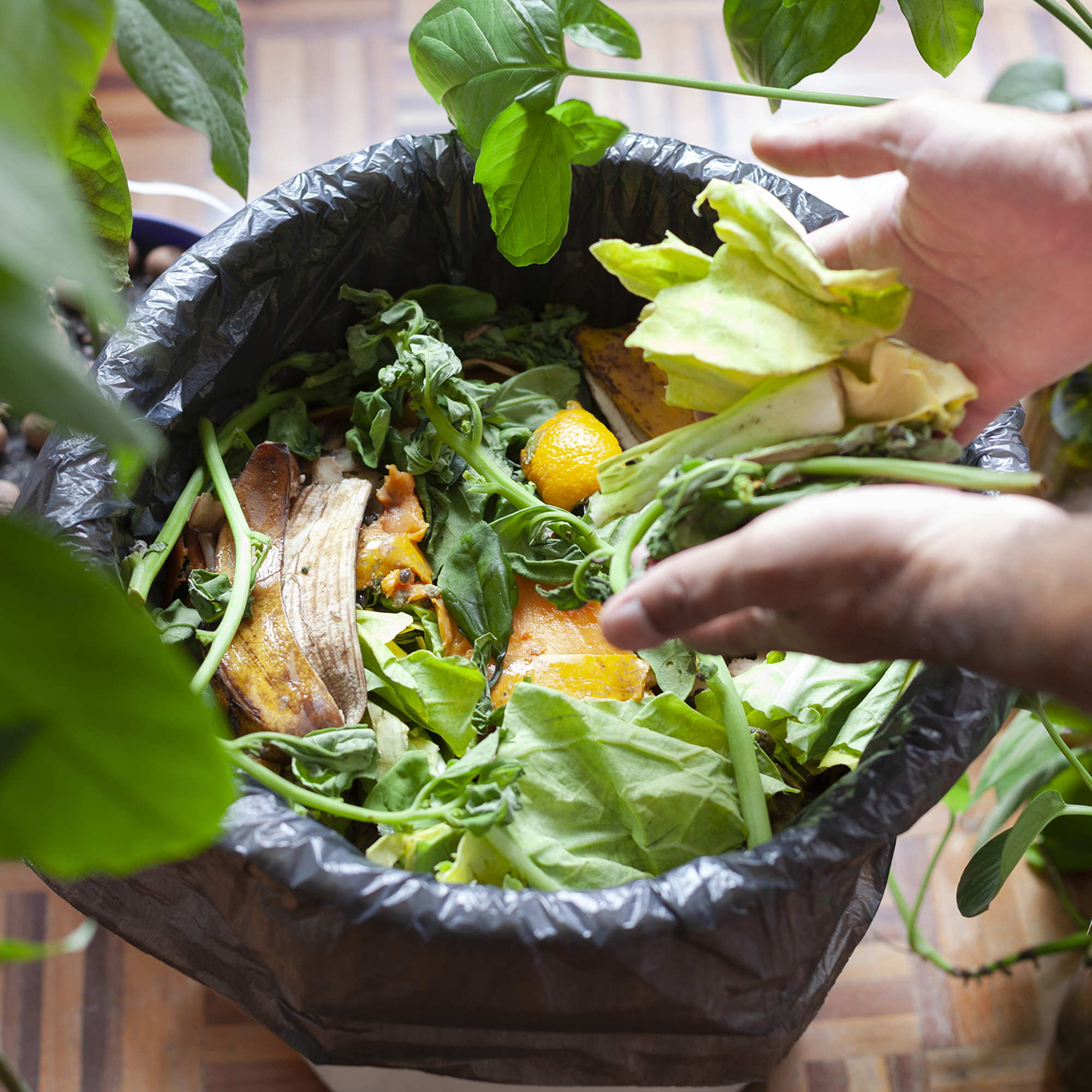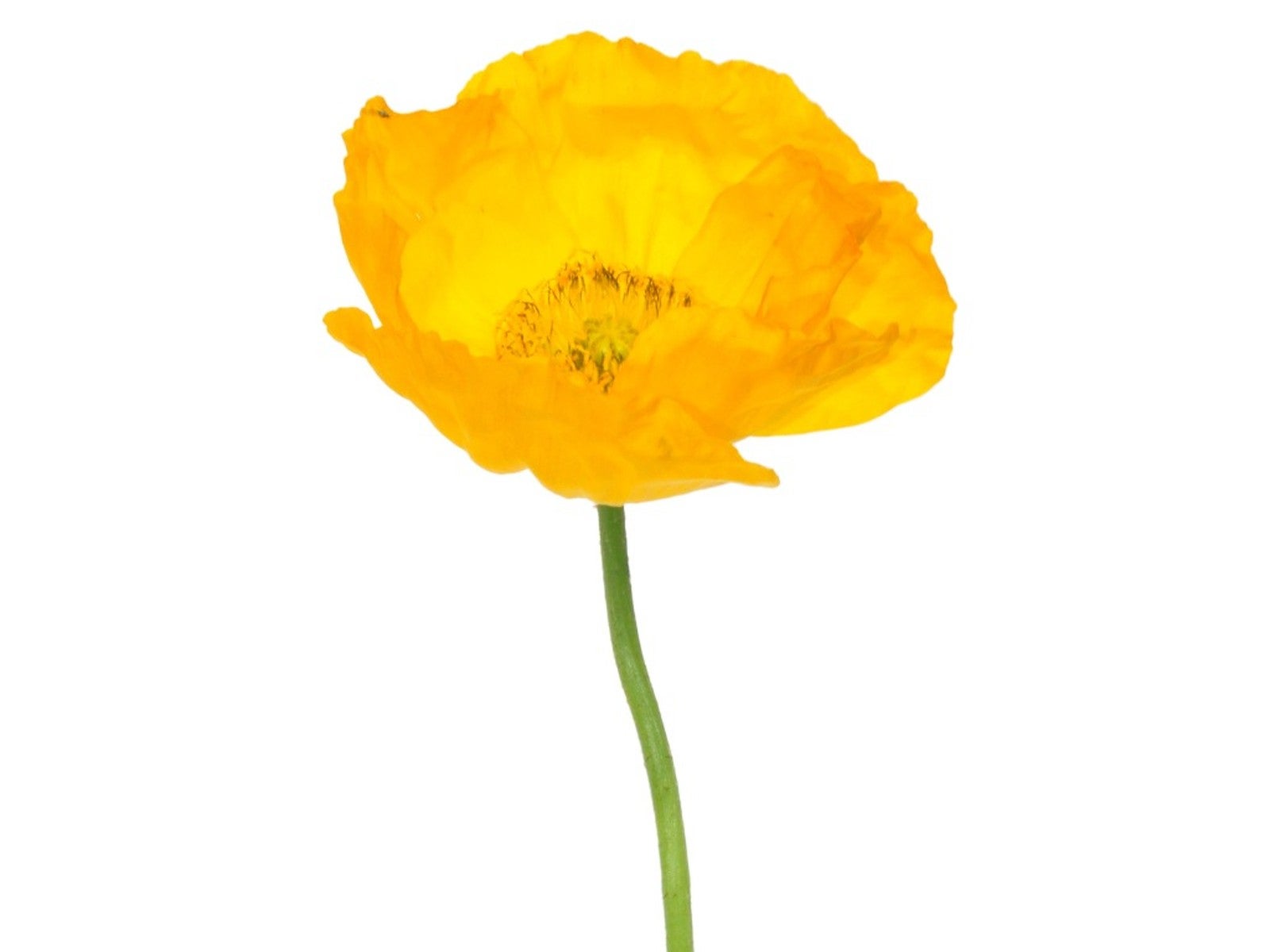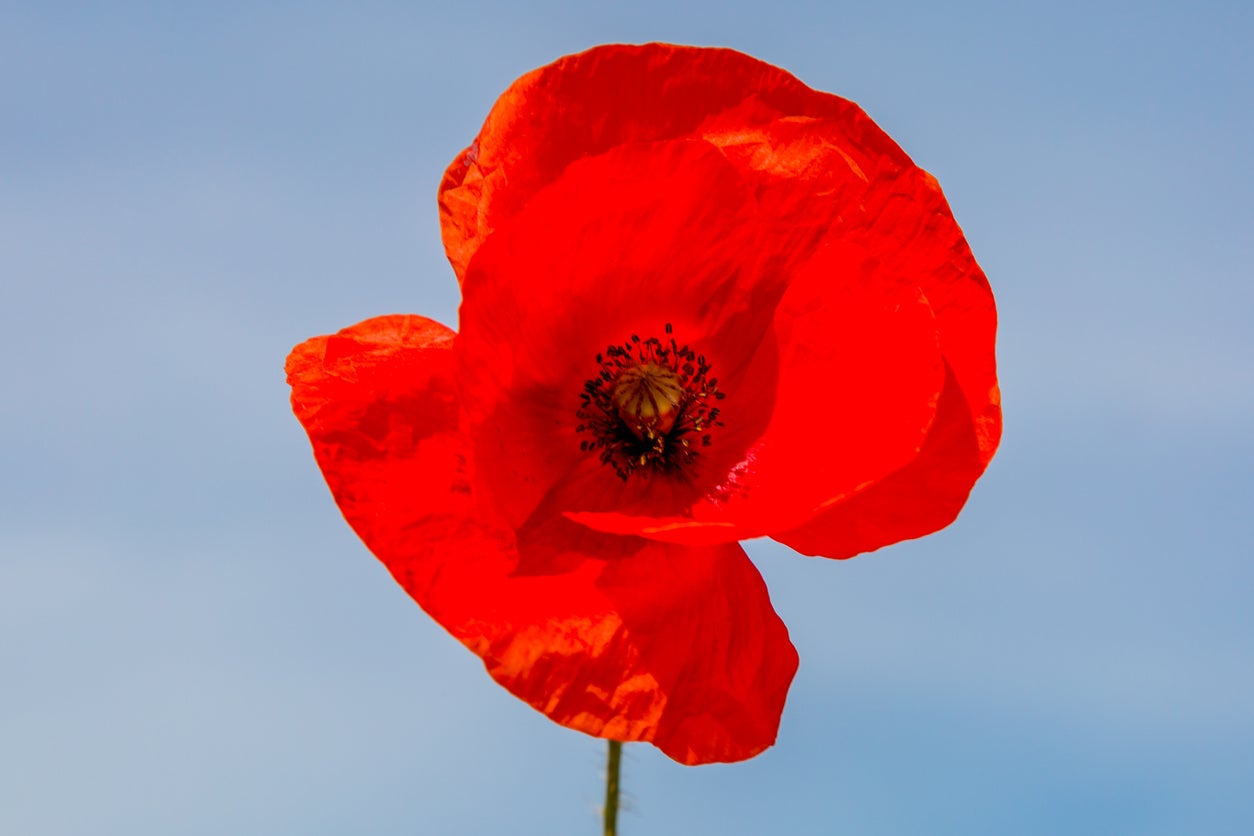Care Of Celandine Poppy: Can You Grow Celandine Poppies In The Garden

Nothing is quite as lovely as when you bring nature right to your garden. Wildflowers are a great way to enjoy natural plants and the beauty they offer. This is especially true of celandine poppy wildflowers. In addition to their ease of planting, the care of celandine plants is simple. Keep reading to learn about celandine poppy info.
Celandine Poppy Info
Celandine poppies (Stylophorum diphyllum) are also known as wood poppies and are members of the Papaveraceae family. They are found growing in damp areas of woods in shaded or partially shaded places. Commonly found in the woodlands of northern parts of the United States, this showy spring bloomer is native to Illinois, Indiana, Michigan, Missouri, and Ohio. Woodland poppies have bright yellow flowers and interesting dissected leaves. This pretty wildflower blooms from March through May. Mature celandine poppy wildflowers reach 24 inches (61 cm.) in height and self-sow easily. The Native Americans used the yellowish orange sap to dye baskets, fibers, and as war paint.
Can You Grow Celandine Poppies?
Since celandine poppy wildflowers are naturally found in woodland environments you may be wondering, can you grow celandine poppies in the home garden. The answer is yes. These woodland beauties respond well to cultivation as long as the soil is high in organic material and the plants have plenty of shade. Many gardeners use celandine plants as a colorful shady woodland border, as it is one of the easiest spring woodland plants to grow. The best way to grow celandine poppies is by seed. Fresh seeds are quick to germinate under the right conditions. Provide plenty of rich compost in the planting area and scatter seeds liberally over the soil. Cover the plants lightly and keep the soil evenly moist. Thin seedlings when they are 4 inches (10 cm.) tall. Plant spacing should be about 12 inches (31 cm.). Seeds planted in the fall will germinate in spring but not bloom until the second season.
Care of Celandine Poppy Plants
Celandine plants will go dormant if the soil becomes too dry. As long as the soil is kept evenly moist, the woodland poppy will naturalize and bring a burst of color year after year. So be sure to water regularly during dry spells and cover with a light layer of mulch for winter protection. Keep flowers picked and deadhead to encourage flower production.
Gardening tips, videos, info and more delivered right to your inbox!
Sign up for the Gardening Know How newsletter today and receive a free copy of our e-book "How to Grow Delicious Tomatoes".
-
 Try The Trend – Turn Any Bed Into A Keyhole Garden With This Clever In-Ground Composter
Try The Trend – Turn Any Bed Into A Keyhole Garden With This Clever In-Ground ComposterKeyhole gardening is an efficient and sustainable practice that saves space. Get started on this DIY project quickly and easily with an in-ground composter.
By Bonnie L. Grant
-
 4 Superfast Composting Methods: Turn Waste Into Garden Gold In 30 Days Or Less
4 Superfast Composting Methods: Turn Waste Into Garden Gold In 30 Days Or LessTry the fastest composting methods to turbocharge your pile and transform kitchen scraps and garden waste into finished compost in just a few weeks.
By Mary Ellen Ellis
-
 Can You Grow Iceland Poppy Indoors – Caring For Iceland Poppy In A Pot
Can You Grow Iceland Poppy Indoors – Caring For Iceland Poppy In A PotIf you don’t have the room to grow these plants in a flower bed, you can still grow Iceland poppy in a pot.
By Raffaele Di Lallo
-
 History Of Red Poppies – Why Red Poppy For Remembrance
History Of Red Poppies – Why Red Poppy For RemembranceWhy red poppy for remembrance? How did the tradition of red poppy flowers begin more than a century ago? Click here to find out.
By Mary H. Dyer
-
 Popular Poppy Varieties: Types Of Poppies For The Garden
Popular Poppy Varieties: Types Of Poppies For The GardenPoppies add a splash of color to the flower bed, they're easy to grow and there are hundreds of poppy varieties to choose from. With so many poppies available, the biggest problem for gardeners is narrowing down the selection! This article can help with that.
By Laura Miller
-
 Planting Poppies In Containers: How To Care For Potted Poppy Plants
Planting Poppies In Containers: How To Care For Potted Poppy PlantsPoppies are beautiful in any garden bed but poppy flowers in a pot make a stunning display on a porch or balcony. Potted poppy plants are simple to grow and easy to care for. Click on the following article to learn more about container care for poppies.
By Gardening Know How
-
 Alpine Poppy Info: Information On Growing Rooted Poppies
Alpine Poppy Info: Information On Growing Rooted PoppiesAlpine poppy is a wildflower found in high elevations with cold winters. Believed to be one of the world’s most north-growing plants, if you’re a chilly climate gardener, you’ll definitely want to learn about growing alpine poppies. Find out how in this article.
By Mary H. Dyer
-
 Double Poppy Info: Learn About Growing Double Flowering Poppies
Double Poppy Info: Learn About Growing Double Flowering PoppiesIf you are a fan of peonies and can't get enough or have difficulty growing them, then you may want to consider growing peony poppies, also known as double poppies. Wait, aren't they illegal? Click this article for additional double poppy information.
By Shelley Pierce
-
 No Oriental Poppy Flowers – Reasons For Oriental Poppies Not Blooming
No Oriental Poppy Flowers – Reasons For Oriental Poppies Not BloomingOriental poppies are among the showiest of perennials, with big, bright blooms that light up a spring garden. But having no flowers on oriental poppies can happen some years, and it?s a real disappointment. Learn why it happens and what to do in this article.
By Mary Ellen Ellis
-
 Saving Poppy Seeds : How And When To Harvest Poppy Seeds
Saving Poppy Seeds : How And When To Harvest Poppy SeedsPoppies have a bad reputation as part of the opium trade, but for gardeners, they are simply lovely blooms in brilliant colors. These easy-to-grow plants are also simple to propagate from seed. Learn when to harvest poppy seeds in this article.
By Bonnie L. Grant